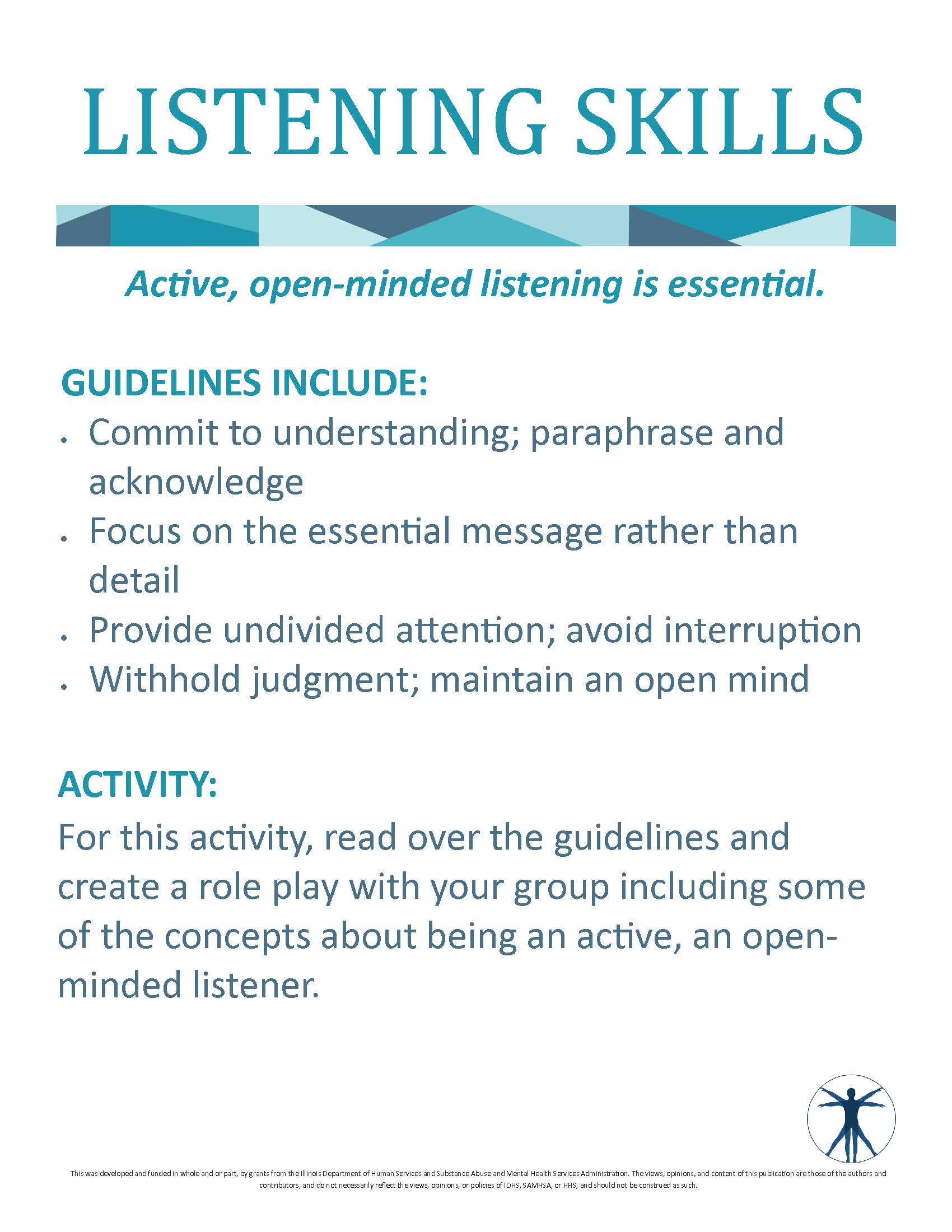
Role-playing exercises are effective tools for practicing and honing active listening skills in a safe and controlled environment. They allow individuals to simulate real-life scenarios and engage in active listening techniques. Here are some role-playing exercises to practice active listening:
Exercise 1: Conflict Resolution
Scenario: Two team members have had a disagreement at work. One feels that their ideas were not considered, and tensions are rising. The goal is to resolve the conflict through active listening.
Instructions:
- Assign one participant as Person A and the other as Person B.
- Person A expresses their concerns and frustrations while Person B actively listens.
- Person B responds using active listening techniques, such as reflective listening and asking clarifying questions.
- Switch roles, allowing Person B to express their perspective while Person A practices active listening.
- After both have had a chance to speak and listen, they work together to find a resolution.
Exercise 2: Customer Service
Scenario: A customer is dissatisfied with a product or service and contacts customer support to express their concerns. The customer support representative needs to actively listen and address the issue effectively.
Instructions:
- One participant plays the role of the dissatisfied customer, and the other plays the customer support representative.
- The customer expresses their problem and dissatisfaction, while the representative practices active listening.
- The representative acknowledges the customer’s concerns, paraphrases key points, and asks clarifying questions.
- The goal is to reach a resolution or offer a suitable solution to the customer’s problem.
Exercise 3: Performance Feedback
Scenario: A manager needs to provide performance feedback to an employee. The employee has received feedback in the past and has some concerns. The manager must use active listening to address these concerns.
Instructions:
- One participant takes on the role of the manager, and the other is the employee.
- The manager provides performance feedback while the employee practices active listening.
- The employee listens actively, paraphrases the feedback, and asks clarifying questions.
- The employee then shares their concerns and feelings about the feedback.
- The manager uses active listening techniques to understand the employee’s perspective and address their concerns effectively.
Exercise 4: Team Decision-Making
Scenario: A team needs to make a critical decision about a project. There are differing opinions within the team. Active listening is essential to reach a consensus.
Instructions:
- The team is divided into smaller groups, each with a facilitator.
- Each group discusses the decision-making topic, with participants taking on different roles and viewpoints.
- Facilitators guide the discussion, ensuring that active listening techniques are used, such as paraphrasing and respectful silence.
- After the discussions, each group presents its decision or recommendation to the larger team.
- The larger team discusses and synthesizes the various perspectives to reach a consensus.
Exercise 5: Active Listening Circle
Scenario: Participants form a circle, and one person starts by sharing a personal experience or story. The person to their left listens actively and responds with empathy, paraphrasing, and asking questions. The process continues clockwise.
Instructions:
- Participants sit in a circle.
- The first person shares a brief personal story or experience.
- The person to their left listens actively for a set time (e.g., 2 minutes) and responds with active listening techniques.
- The circle continues, with each person taking turns sharing and actively listening.
- The exercise encourages participants to practice active listening in a supportive and non-judgmental environment.
These role-playing exercises allow participants to develop and refine their active listening skills by engaging in various scenarios. They can be customized to specific contexts and objectives, making them valuable tools for enhancing communication and problem-solving skills.